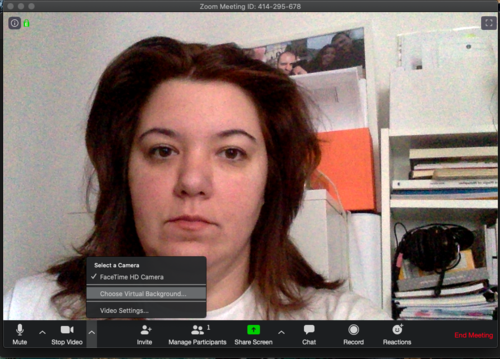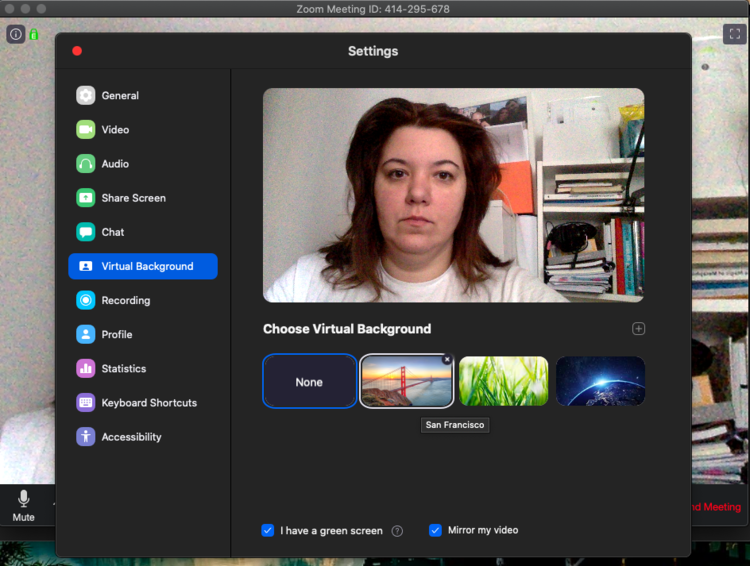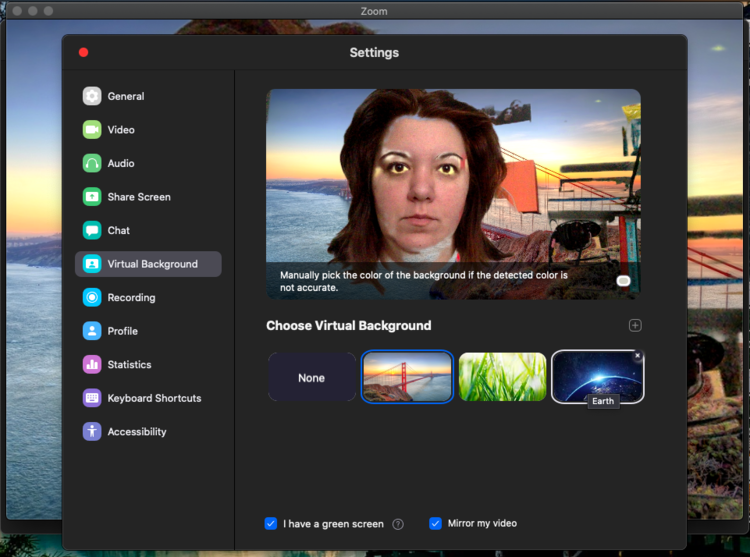Guide: 8 things to do before joining a video-conference
If you are on social media, and you are not learning, not laughing, not being inspired or not networking, then you are using it wrong.
Germany Kent
We are living interesting times, most of us being isolated in our homes. The activity has been moved in many cases online. This happened to my work, my coaching sessions, and of course to Toastmasters - where most sessions are held on the Zoom platform. So now at any time, you can connect to a meeting anywhere in the world. And yes, in some countries they gave up the 40-minute barrier to group video conferences for some time now.
Yesterday, I was reading in a NYTimes article that most teenagers are organizing conferences on this platform and that in practice, most of us live in zoom. Yes, that's how it feels! And for those who have no experience on this site, it is an ”adapt fast” test. For me this last week, meant a stronger connection and a more careful view of my online habits. Maybe even more than before. Because although I work in a highly digitized company with many tools available, we value the time we spend face to face and try as much as possible to have this kind of meeting. My chance in all this situation: I was prepared for this isolation and moving to video conferences of all activities.
In the past week, I have participated in many events, meeting and courses that I lost count. From how you design a presentation or training sessions, at international sessions for the exchange of know-how from others with much more experience on the topic. I have also attended simulations of online contests with participants from all continents.
What stayed with me after seeing and hearing a lot? A list of preparations to do before attending a video conference:
1. AUDIO: Make sure you have a pair of headsets that you can use. Don't rely on the ones built into the laptop. It also works with a phone hands-free system, as a last resort. As long as you do not speak or do not have active involvement, keep your microphone muted. Activate the sound only when you have something to add. This is the way to avoid hearing in the audio background of the meeting who the cats are fighting or some soft between partners on the evening supper topic or some dirty details ;))
2. VIDEO: Be prepared to join the video meeting, not just via sound! I mean, ideally, you would have to fix your hair, brush your teeth and have at least a shirt or a t-shirt on you;) (for "this how NOT to do it" see the pictures below, 6am and no coffee onboard). Ladies - I do not recommend undershirt (from my experience few days ago) you will look like you are wearing a bra. Choose a light shirt or dress, but not something with straps ;)
3. VISUAL CONTACT: When you look - make eye contact with the camera lens - so people will feel that you are looking at them. Look for some books and place your laptop on them so it will be on a higher position. This will make it easier for you to look at it!
4. BACKGROUND AND IMAGE: Clean up! And when I say this I mean what is seen in the background, but also around. Or choose a place in the house where what's behind you is optimal: a wall, a library, a poster. Avoid standing with your back to a window. If it’s not night, you will be contre-jour which will make you look like a blackhead that lights up. Ideally, you should face the natural light source or have a light in the area to brighten your features. Take into consideration this especially if you are in a darker part of your home or it’s evening.
Zoom gives you the option to have a virtual background. Find below in the carusel how you can activate it , click on the picture and you will go to the next one. If you want to use this feature you will need to have a green background in the back (you can use a poster or a material in this color to hang above the camera line). Avoid wearing white, bullets or stripes. Otherwise, you will look like me (not tired and without coffee, but translucent :)):
5. TECHNICAL DETAILS: Make it so you are visible from the waist up if you have to talk, especially if you are the kind (like me) who talks a lot with the hands (make sure they stay in the camera area). If you can afford the place and technology (headphones and high-performance camera), stand up so that people can see you how you move. Do not forget the position of the camera, this should be somewhere high ”the eye” should be face to face with your forehead. Even on video the feeling of looking up at someone talking is a little uncomfortable.
6. VISUAL AID: If you have a presentation and you want to work with keynotes, ppt, prizes, or whiteboard, spend time on rehearsals, beforehand. Take into account the delay between what you do and what other participants are able to see (this may cause a lag of few seconds). The presentation needs to be less complex than in a regular training or a face-to-face presentation. Be careful with the design - go minimalistic. If you have props, when you present it again - do it slower in front of the camera, otherwise you can achieve that blurring effect that prevents people from seeing what you want to show them. Be careful about the colors you show, they appear differently on each screen depending on the calibration of the screen.
7. INTERACTIONS: Unlike a live session here if you have questions and answers section you should explain very clearly how you want to receive the answers - in chat, or using the mic. Give them some time and announce it (1 - 2 - 3 minute) for this part.
Speak slowly (the delay I mentioned above on the video can also happen here). Interact with the audience and do not turn the session into a therapy one where you heal the ”untalked” feeling out of you!
If you want to interact with the public, like the question section, tell them clearly what you want to do - open their microphone and talk or write to your chat (public or just for you).
If you have exercises you can use menti, doodle or polls from google. If you have the "pro" version of the zoom you can do polls directly from the platform, and during the exercises you can divide the participants on separate cameras.
8. Give frequent breaks if you are planning a longer conference, put a timer on the screen and say when you return from the specific break (eg we return at 12.30, not something general like in 5 minutes or half an hour). Also, make sure that the timer (if there is one at the meeting) is the transmission that you have fixed on the screen, so you will always be framed in time and will show respect to those who are at the conference with you.
BONUS: Bring water with you before going "live". This way you will not lose anything and you will also have a hydrated voice, you will have fewer ”ahs”, or "bumps" and interruptions to correct it.



